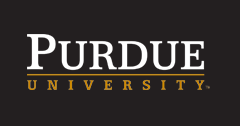Keywords
Expansion Microscopy, Super-Resolution, Immunofluorescence, Multi-Color
Presentation Type
Poster
Research Abstract
Fluorescence microscopy, which allows multiple-color imaging, plays an important role in observing structures inside cells with high specificity. The advent of super-resolution fluorescence microscopy, or nanoscopy techniques such as single-molecule switching nanoscopy (SMSN), has extended the application range of fluorescence microscopy beyond the diffraction limit, achieving up to 10-fold improvement in spatial resolution. At the same time, the recent development of expansion microscopy (ExM) allows samples to be physically expanded by 4-fold in the lateral dimensions providing another independent method to resolve structures beyond the diffraction limit. When combined, ExM-SMSN makes it possible to achieve another significant leap in resolution of light microscopy. However, the need for specialized protein labels prevents the efficient combination of these two techniques, especially for multiple-color imaging. Here, we demonstrate our work in progress to effectively combine these two super-resolution techniques to provide another 2-4-fold improvement from the current achievable resolution for multi-color imaging. The developed technique will further push the boundary of achievable resolution of fluorescence microscopy and pave the way towards resolving protein-specific ultra-structures in the cellular context.
Session Track
Biomedical Engineering
Recommended Citation
David A. Miller, Michael Mlodzianoski, Sheng Liu, and Fang Huang,
"Multi-Color Ultra-High Resolution Imaging"
(August 3, 2017).
The Summer Undergraduate Research Fellowship (SURF) Symposium.
Paper 94.
https://docs.lib.purdue.edu/surf/2017/presentations/94
Included in
Bioimaging and Biomedical Optics Commons, Molecular, Cellular, and Tissue Engineering Commons
Multi-Color Ultra-High Resolution Imaging
Fluorescence microscopy, which allows multiple-color imaging, plays an important role in observing structures inside cells with high specificity. The advent of super-resolution fluorescence microscopy, or nanoscopy techniques such as single-molecule switching nanoscopy (SMSN), has extended the application range of fluorescence microscopy beyond the diffraction limit, achieving up to 10-fold improvement in spatial resolution. At the same time, the recent development of expansion microscopy (ExM) allows samples to be physically expanded by 4-fold in the lateral dimensions providing another independent method to resolve structures beyond the diffraction limit. When combined, ExM-SMSN makes it possible to achieve another significant leap in resolution of light microscopy. However, the need for specialized protein labels prevents the efficient combination of these two techniques, especially for multiple-color imaging. Here, we demonstrate our work in progress to effectively combine these two super-resolution techniques to provide another 2-4-fold improvement from the current achievable resolution for multi-color imaging. The developed technique will further push the boundary of achievable resolution of fluorescence microscopy and pave the way towards resolving protein-specific ultra-structures in the cellular context.

